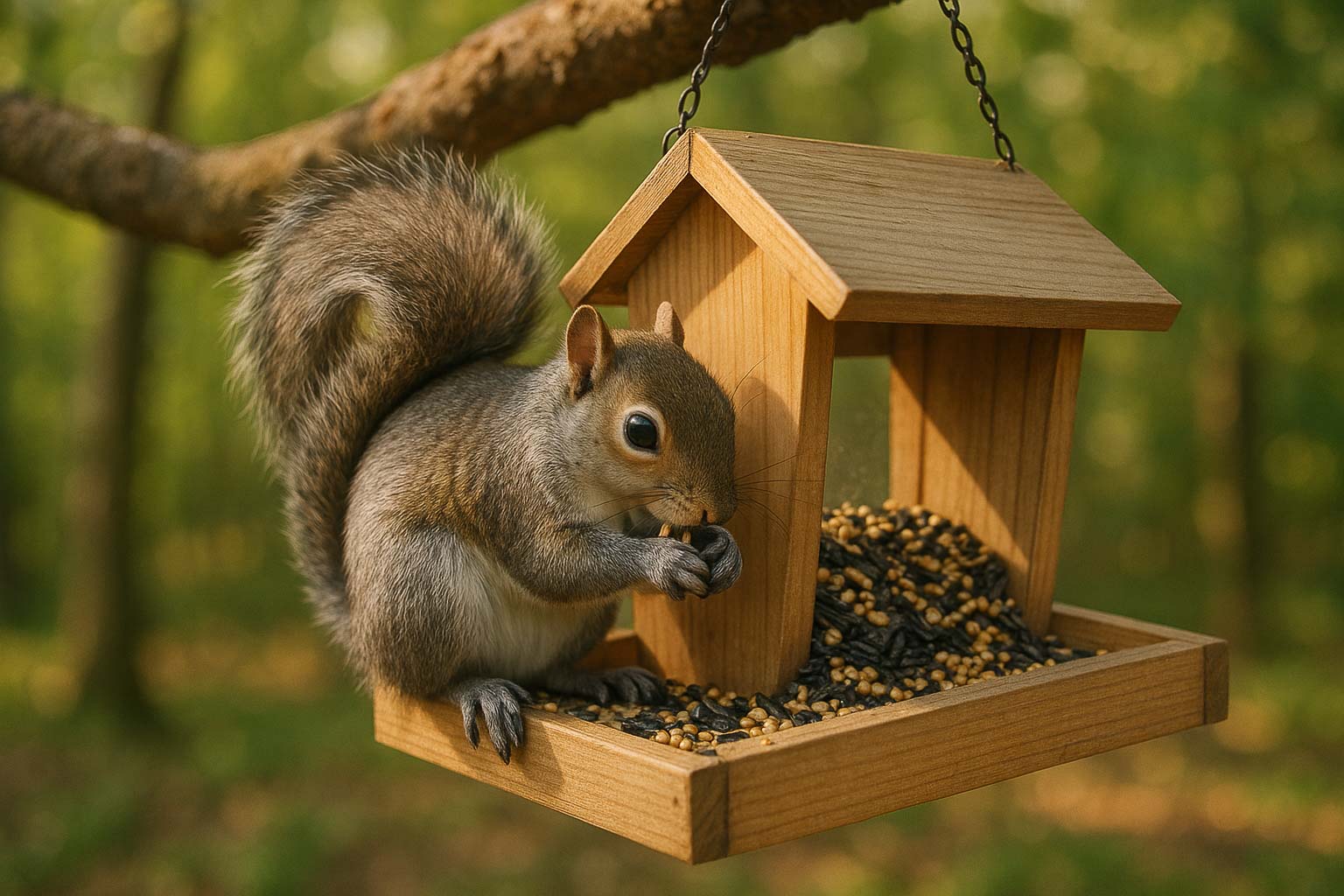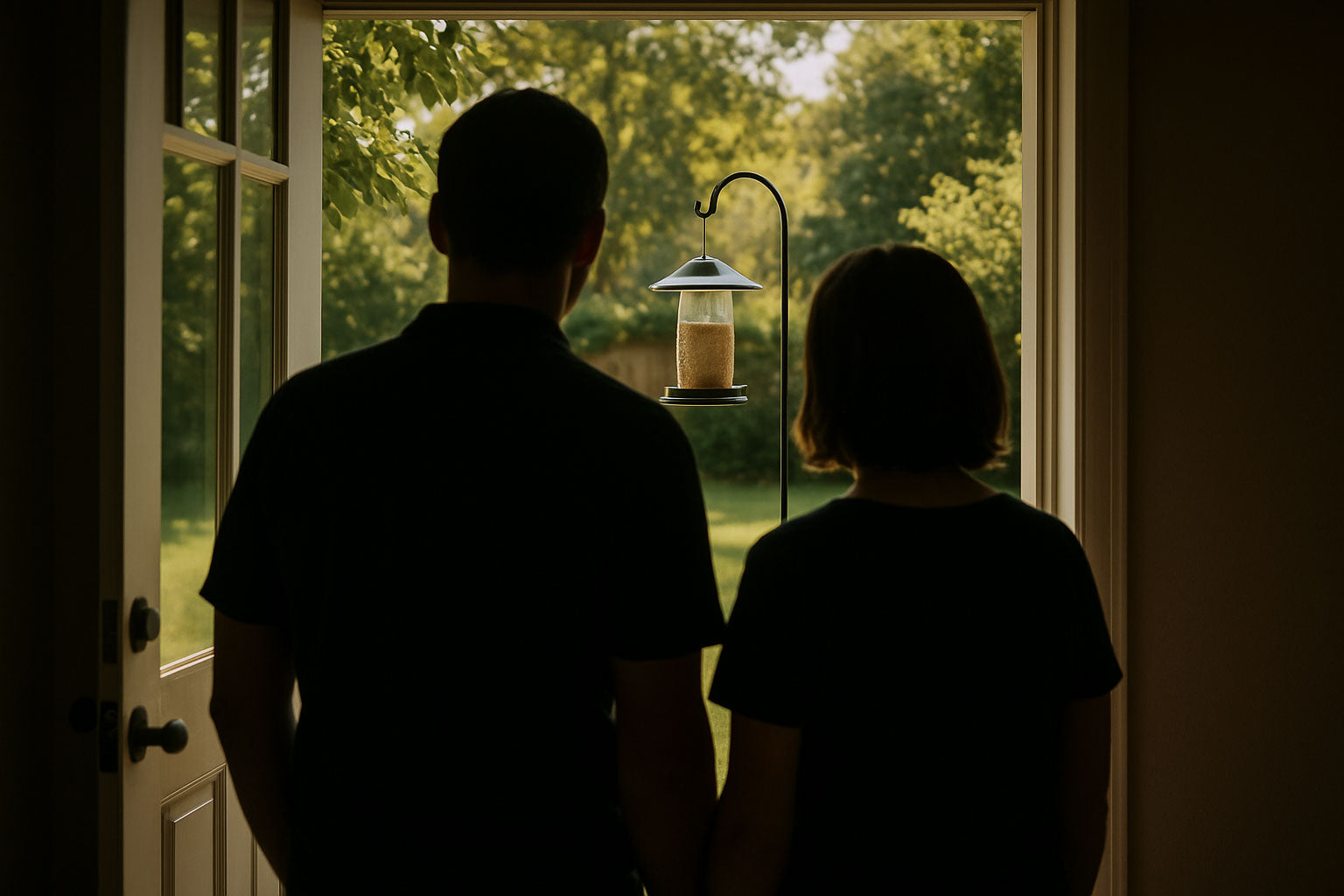Bird feeders bring color and life to your backyard, but without regular cleaning, they can also pose a hidden danger. Dirty feeders can harbor mold, bacteria, and parasites that spread disease among wild birds. To keep your feathered visitors safe and healthy, it’s essential to make feeder maintenance part of your birdwatching routine.
At Trail Optics, we design smart feeders with durability and easy upkeep in mind — because protecting the birds you love is just as important as attracting them.
Why Cleaning Bird Feeders Matters
Wild birds gather in close proximity at feeders, making them more vulnerable to illness. Some common risks include:
- Salmonella bacteria – can spread quickly among finches and sparrows.
- Avian pox – a viral infection that can spread at shared perches.
- Moldy seed – leads to respiratory issues and poor bird health.
By cleaning regularly, you reduce these risks and create a safe, dependable feeding station.

How Often Should You Clean?
- Warm weather: Every 1–2 weeks, as heat and humidity promote mold.
- Winter months: Every 2–4 weeks, depending on snow and moisture levels.
- After storms: Clean immediately if seed becomes wet or spoiled.
Step-by-Step Cleaning Guide
- Empty the Feeder: Remove all seed and discard any that looks clumped, wet, or moldy.
- Soak in Warm, Soapy Water: Use mild dish soap and soak for at least 10 minutes.
- Scrub Thoroughly: Use a brush to remove residue from perches, ports, and seams.
- Sanitize: A diluted bleach solution (1 part bleach to 9 parts water) helps kill bacteria. Rinse thoroughly.
- Dry Completely: Ensure the feeder is fully dry before refilling — moisture encourages mold.
- Refill with Fresh Seed: Use high-quality seed stored in a cool, dry place.
Tips for Keeping Feeders Clean Longer
- Choose feeders with drainage holes to prevent standing water.
- Opt for designs that disassemble easily for deep cleaning.
- Avoid overfilling; smaller amounts reduce the chance of seed spoiling.
- Sweep or rake beneath feeders regularly to clear fallen seed.

How Trail Optics Smart Feeders Make Maintenance Easier
Traditional feeders often require extra effort to clean — but Trail Optics smart feeders are built with durable materials and weather-resistant designs. They’re easy to take apart, resistant to moisture buildup, and built to keep seed fresh longer.
With the added bonus of a built-in camera, you’ll know exactly when your feeder is running low or needs a quick clean, making your birdwatching both safe and stress-free.
A clean feeder is a healthy feeder. By committing to regular maintenance, you protect your local bird population and ensure your backyard remains a trusted, safe stop for feathered visitors year-round.
At Trail Optics, we’re proud to make smart bird feeders that simplify both birdwatching and care — so you can focus on the joy of seeing every bird that visits.



Leave a comment
This site is protected by hCaptcha and the hCaptcha Privacy Policy and Terms of Service apply.